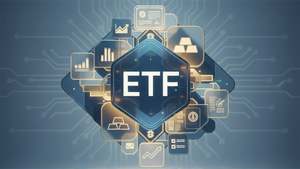
October 10, 2025 – Bitcoin (BTC) has reached a monumental milestone, with its total institutional and corporate treasury holdings now exceeding an astounding $130 billion. This unprecedented accumulation underscores a profound shift in corporate financial strategy, solidifying Bitcoin's role as a legitimate digital reserve asset in the global economy. While Bitcoin's dominance in corporate treasuries continues to expand, altcoin holdings, though significantly smaller, are beginning to show strategic diversification as firms explore yield-generating opportunities and specific use cases beyond Bitcoin.
This landmark achievement, largely observed around June 2025 and sustained through October, signals heightened institutional confidence in Bitcoin as a hedge against inflation and a long-term store of value. The immediate market reaction has been overwhelmingly positive for Bitcoin, pushing its price to new all-time highs and sparking renewed optimism across the broader crypto ecosystem. For the crypto world, this isn't just a number; it's a testament to Bitcoin's maturing narrative and its increasing integration into mainstream finance, setting a new precedent for how companies manage their balance sheets in an evolving digital age.
Market Impact and Price Action
The period surrounding Bitcoin treasuries hitting the $130 billion mark, particularly late September and early October 2025, was characterized by a robust market rally, primarily led by Bitcoin, with varied performances across altcoins.
Bitcoin demonstrated remarkable strength, surging past $125,000 to establish a new all-time high of approximately $126,500 on October 7, surpassing its previous peak set in August. This represented a substantial gain of about 12% in the first week of October and nearly 30% year-to-date. By October 10, Bitcoin was consolidating within a healthy range of $120,000 to $126,000. Key resistance levels were identified between $123,000 and $125,000, with analysts eyeing targets of $131,500 by month-end and potentially $140,000 by year-end 2025. Support levels held firm at $120,000 and $115,000 (100-day Exponential Moving Average), with a psychological floor at $100,000.
Major altcoins also experienced significant movements. Ethereum (ETH) saw a volatile September, dipping below $4,000 before rebounding to close near $4,480. By October 3, ETH reached a new all-time high of $4,955, stabilizing around $4,357 by October 10. Upcoming developments like the "Fusaka upgrade" in December 2025 are expected to propel ETH beyond $5,000. Solana (SOL) staged a spectacular rally, hitting $238 before a minor correction, showing consistent strength and trading near $226. It is anticipated to clear the $250 resistance soon, with potential new highs between $416 and $464 by year-end. XRP (XRP) consolidated around the $3 level, breaking above it with a 5% jump on October 9, with anticipated SEC decisions on spot XRP ETF applications between October 18-25 expected to trigger a 40% rally. Binance Coin (BNB) experienced a powerful surge, surpassing $900 in September and then breaking past $1,000, $1,100, $1,200, and $1,300 by October 8, reaching an all-time high of $1,305.
Trading volume and liquidity changes were significantly influenced by institutional engagement. Spot Bitcoin ETFs witnessed substantial inflows, exceeding $5 billion in the first week of October, surpassing September's $4.37 billion. These inflows are crucial for Bitcoin's liquidity and price stability. Interestingly, monthly spot trading volume across centralized crypto exchanges decreased to $1.67 trillion in September 2025, a 9.7% decline from August, marking the lowest since June. However, derivatives markets showed strong activity, with CME Group reporting record quarterly cryptocurrency average daily volume (ADV) of 340,000 contracts in Q3 2025. Bitcoin holdings on centralized exchanges fell to a six-year low, with approximately $15 billion worth of BTC moving off exchanges into institutional funds, treasuries, or self-custody over two weeks, indicating a long-term holding strategy and reduced selling pressure.
This market dynamic shares similarities with the 2024 spot Bitcoin ETF approvals, which drove over $15 billion in inflows and a nearly 40% price surge for Bitcoin in Q1 2024. The current cycle in 2025 is similarly characterized by global liquidity injections and anticipated Federal Reserve rate cuts, amplifying Bitcoin's upward trajectory. The market's maturation is evident, with Bitcoin's correlation to traditional indices reaching 0.87 in 2024. While Bitcoin rallies often precede "altcoin seasons," current trends suggest a more discerning capital rotation towards altcoins with real-world utility and strong fundamentals, rather than a uniform rise across all altcoins. The overall sentiment around this period pushed the Crypto Fear & Greed Index into "Extreme Greed," echoing sentiments from previous bull cycles.
Community and Ecosystem Response
The crypto community is abuzz with a mix of bullish sentiment and strategic contemplation following Bitcoin treasuries reaching $130 billion, significantly dwarfing altcoin holdings. This milestone has solidified Bitcoin's narrative as a premier digital reserve asset, prompting diverse discussions across social media, among influencers, and within related sectors.
On crypto Twitter and Reddit, the prevailing sentiment celebrates Bitcoin's dominance and its role as a leading indicator for the market. Users frequently highlight the $130B figure as irrefutable evidence of institutional validation, reinforcing Bitcoin's transition from a speculative asset to a long-term store of value. While many acknowledge a "Bitcoin dominance phase" as typical in early bull markets, there's a strong anticipation for an eventual "altseason" once Bitcoin stabilizes. However, debates persist, particularly concerning Ethereum (ETH). While some "BTC maxis" maintain a critical stance, ETH proponents emphasize its yield-generating capabilities through staking and its potential for "flipping Bitcoin," citing increasing interest from sovereign funds and major institutions exploring stablecoin issuance on its network.
Crypto influencers and thought leaders offer multifaceted reactions. Many, like those at MicroStrategy (NASDAQ: MSTR), view the growth in corporate Bitcoin treasuries as a powerful catalyst for institutional adoption, blurring the lines between traditional finance and digital assets. The entry of biotechnology firms like MAIA Biotechnology into crypto treasury strategies further affirms this legitimacy. Conversely, some bankers and analysts express caution, warning of a "leveraged crypto time bomb" if companies, often using equity or debt to finance Bitcoin purchases, face sharp market downturns. Anatoly Crachilov, CEO of Nickel Digital Asset Management, highlighted that the financial sustainability of these firms, rather than regulation, poses a greater risk, with some critics drawing parallels to the dot-com bubble. Despite this, experts like Max Shannon from Bitwise point out Ethereum's distinct advantage in generating compounding returns through staking and DeFi yields, leading some firms like SharpLink Gaming to significantly increase their ETH holdings.
The surge in institutional interest has had a tangible impact on related DeFi protocols, NFT projects, and Web3 applications. DeFi protocols have seen increased demand for staking infrastructure, with companies developing validator tools to generate yield from Ethereum holdings. Firms like NetBrands Corp. are implementing layered digital asset treasury models integrating staked Ethereum and Aave. This has contributed to a rebound in revenue fees for major DeFi platforms. While less direct, the overall confidence instilled by institutional adoption is expected to indirectly benefit NFT markets, potentially leading to rising floor prices for "blue-chip" collections. Innovative projects are also emerging, such as Lib Work linking 3D-printed homes to NFTs to tokenize property rights. Corporate treasury management involving digital assets further legitimizes the Web3 space, attracting more traditional businesses and developers to explore industry-specific Web3 applications.
Broader crypto Twitter and Reddit sentiment remains largely bullish, celebrating Bitcoin's milestones and anticipating the rotation of capital into altcoins. Macroeconomic factors like USD weakness and expected Fed rate cuts are also frequently discussed as drivers of risk-on sentiment. Despite some fluctuations, the overall crypto industry sentiment in Q3 2025 remained bolstered by Bitcoin hitting new all-time highs and a nascent altcoin rally.
What's Next for Crypto
The cryptocurrency market stands at a pivotal juncture, shaped by Bitcoin's (BTC) soaring $130 billion in corporate treasuries and the comparative, yet strategic, lag in altcoin adoption. This dynamic sets the stage for significant short-term and long-term implications, with several catalysts poised to influence the market's trajectory.
In the short term, Bitcoin is expected to maintain its dominance, continuing its role as a digital reserve asset favored by institutions seeking inflation hedges and portfolio diversification. While many altcoins may continue to lag, capital is likely to flow selectively into those with robust fundamentals, proven scalability, and clear utility, leading to targeted rallies rather than a broad "altcoin season." The accessibility provided by spot Bitcoin ETFs will continue to attract traditional investors, deepening market liquidity. However, the market will remain sensitive to macroeconomic factors, with global economic uncertainty potentially causing investors to favor Bitcoin's perceived safety.
Long-term, Bitcoin's position as a foundational digital reserve asset within modern finance will solidify, challenging traditional asset classes. The broader crypto market is set to mature further, with a stronger emphasis on fundamentals, utility, and regulatory clarity over speculative hype. While Bitcoin secures its store-of-value narrative, altcoins, particularly those focused on Layer-2 solutions and Real-World Asset (RWA) tokenization, will be crucial for broader blockchain utility and innovation. Investors will continually re-evaluate their Bitcoin-to-altcoin allocations, balancing Bitcoin's stability with the higher, albeit riskier, growth potential of certain altcoins.
Several potential catalysts are on the horizon. Continued adoption and increasing demand for spot Bitcoin and Ethereum ETFs will drive significant institutional inflows. The potential approval of spot ETFs for other altcoins like Solana (SOL), XRP (XRP), Litecoin (LTC), and HBAR could unlock new institutional capital. Ethereum's upcoming Pectra upgrade is expected to enhance network efficiency and staking capabilities, boosting its ecosystem. Favorable regulatory developments, such as the GENIUS Act and the BITCOIN Act in the U.S., could provide much-needed clarity and consumer protections, alleviating uncertainties. Anticipated increases in global liquidity and a shift towards more crypto-friendly monetary policies (e.g., lower interest rates, weaker U.S. dollar) could encourage further investment in risk assets. Additionally, more corporations adopting Bitcoin-focused treasury strategies, alongside a potential resurgence of Initial Coin Offerings (ICOs) under improved regulatory frameworks, will fuel market growth and innovation.
For projects, the strategic imperative is to focus on developing real-world utility, robust use cases, and scalable solutions, while ensuring regulatory compliance. Building strong developer communities and integrating within broader blockchain ecosystems will be key to attracting sustained investment. For investors, a nuanced diversification strategy is crucial, balancing Bitcoin for stable growth with selective altcoins for higher returns, alongside robust risk management. Due diligence on altcoin fundamentals is paramount, and monitoring macroeconomic trends remains essential. Direct Bitcoin ownership is generally considered a safer and more efficient investment than investing in leveraged Bitcoin treasury companies, which carry additional systemic risks.
Looking ahead, the most likely scenario (high likelihood) is Bitcoin-led growth with selective altcoin expansion. Bitcoin will continue its trajectory as a digital reserve asset, driven by institutional adoption and ETF inflows. Innovative altcoins with strong utility and scalability will gain traction, leading to targeted rallies rather than a broad "altcoin season." A broad altcoin season (moderate likelihood) could occur if Bitcoin dominance significantly declines, fueled by widespread altcoin ETF approvals and a substantial shift in investor sentiment. While a market consolidation or "crypto winter" (low to moderate likelihood) remains a possibility due to macroeconomic headwinds or stringent regulation, the increasing institutional integration and regulatory progress might offer some resilience. Long-term, a Decentralized Finance (DeFi) and Real-World Asset (RWA) tokenization revolution (moderate likelihood) could fundamentally redefine finance, driving immense value to platform altcoins and specialized DeFi/RWA tokens.
Bottom Line
The ascent of Bitcoin treasuries to an unprecedented $130 billion is a watershed moment for the crypto industry, fundamentally reshaping its long-term trajectory. This milestone signifies Bitcoin's undeniable transition from a speculative digital asset to a strategic, institutional-grade reserve asset, increasingly integrated into corporate balance sheets as a hedge against inflation and a store of value. For crypto investors and enthusiasts, the key takeaway is the profound institutional confidence in Bitcoin, driving significant capital inflows and cementing its position as "digital gold."
While Bitcoin enjoys this robust institutional embrace, altcoin treasuries, though lagging in total value, are not entirely stagnant. Instead, they reflect a more nuanced and strategic diversification by some firms exploring yield-generating opportunities, specific use cases, and the potential for higher returns, albeit with greater risk. This suggests a maturing market where capital is allocated more discerningly, favoring altcoins with strong fundamentals, clear utility, and scalability over purely speculative ventures. The success of pioneers like MicroStrategy (NASDAQ: MSTR) in leveraging Bitcoin for competitive advantage serves as a powerful precedent for other corporations.
The long-term significance of this trend is immense, challenging the traditional four-year Bitcoin cycle and positioning Bitcoin as a permanent fixture in global finance, potentially competing with traditional assets like gold and Treasury bonds. This accelerating corporate adoption, coupled with ongoing regulatory clarity (like the FASB rule allowing fair market value reporting), is propelling crypto adoption at an unprecedented pace. However, it also introduces new considerations, such as the potential for "nationalization" of corporate Bitcoin holdings by governments, raising centralization concerns. Beyond corporate treasuries, broader crypto adoption is also evidenced by the growth of stablecoin usage for payments and the increasing number of active users and developer activity across various blockchain networks, including Ethereum and Solana.
To navigate this evolving landscape, investors and enthusiasts should closely monitor several critical metrics and events. Key among these are the total amount of BTC held by public and private companies (available on resources like bitcointreasuries.net), institutional capital flows into Bitcoin and Ethereum Spot ETFs, and new regulatory developments globally. Bitcoin Halving events, while potentially tempered by institutional demand, remain important for supply dynamics. Macroeconomic indicators such as inflation rates, central bank interest rate decisions, and geopolitical events will continue to influence corporate decisions to diversify into Bitcoin. Finally, keeping an eye on company earnings reports from firms with significant crypto holdings and observing new innovation cycles in the altcoin space will provide crucial insights into the market's future direction.
This article is for informational purposes only and does not constitute financial or investment advice. Cryptocurrency investments carry significant risk.





